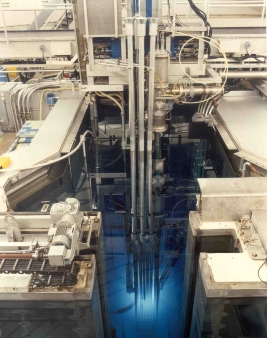Neutron activation analysis (NAA) is a sensitive analytical technique for performing chemical compostion analysis. Neutron activation enables a qualitative and quantitative multi-element analysis of major, minor, and trace elements in liquid and solid samples of approximately 60 elements (30-40 elements simultaneously).
For many elements and applications, NAA offers sensitivities that are superior to those attainable by other analytical techniques for chemical composition analysis; a detection limit of 1-2 ppb is feasible. The reason for the high sensitivity of Neutron Activation Analysis is that most sample matrices appear to be transparent; elements as H, C, O, N, P, and Si hardly form any radioactive isotopes. Accordingly, it is not necessary to perform any sample preparation other than size reduction and (in some cases) drying, which makes the technique non-destructive and avoids complicated dissolution steps as is often the case with other techniques for quantitative chemical analysis.
Another advantage is that the technique requires only small amounts of sample material – 100 to 200 milligrams is typically sufficient, although also larger specimen can be handled. The method is based on the conversion of stable nuclides into radioactive nuclides (radionuclides) by irradiation with thermal neutrons (neutrons of low energy). These radionuclides stabilize by decline to stable nuclei by transmission of radioactive gamma-radiation. The energy of the gamma-radiation provides element-specific information on the radionuclide, providing a qualitative landscape of the sample. The number of pulses (intensity) at certain energy is proportional to the concentration of the element in the sample and enables a fully quantitative assessment.
Neutron activation measurements will be carried out employing the so-called “Hoger Onderwijs Reactor” under ISO 17025 accreditation.




